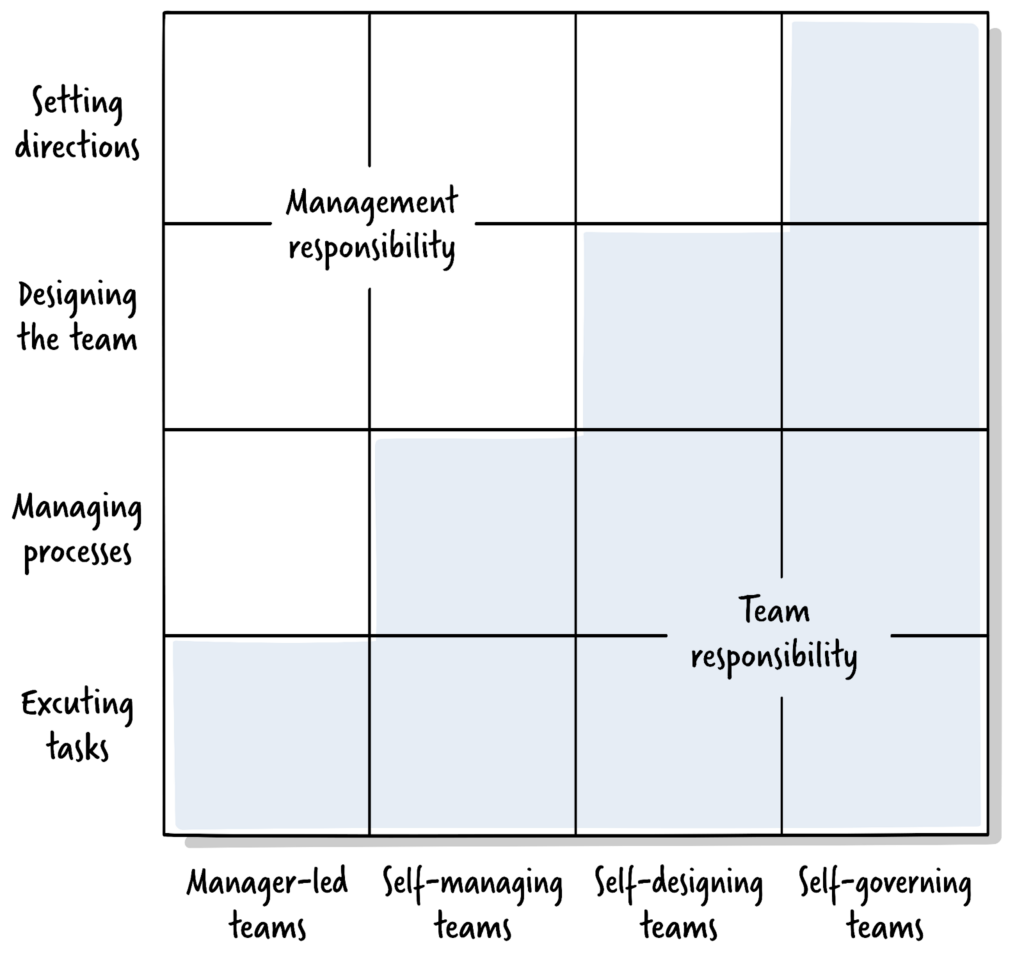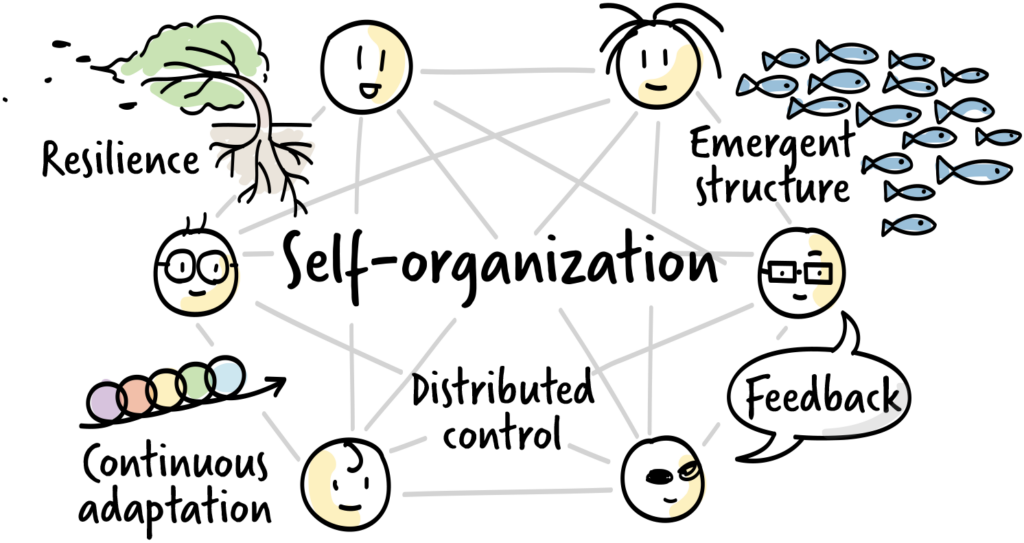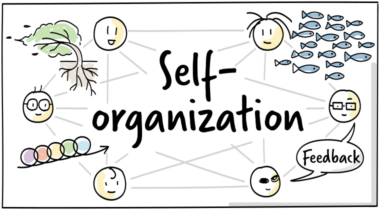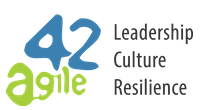Self-Organizing Teams: A Complete Guide
Modern day organizations benefit from decentralized decision-making. To be more resilient and flexible, they must be built upon autonomous and self-organized teams. Self-organization seems then to be a crucial capability for organizations today. But what do we mean by the term self-organization?
What is Self Organization?
There seem to be different interpretations of the term self-organization with regards to teams. In fact it tends to be a rather broad term, which is often used to indicate a variety of team structures, with different levels of authority.
In his book Leading Teams: Setting the Stage for Great Performances, Richard Hackman provides us with an authority matrix which distinguishes four levels of team self-organization, depending on the conditions and responsibilities of the team:
- Manager-led teams’ authority is limited to task execution while their managers monitor and manage work processes, design the context and set the direction.
- Self-managing teams put members not just in charge of task execution but also for monitoring and managing their progress and process, for example collecting and analyzing data and initiating improvement actions.
- Self-designing teams have the authority to modify the design of their team, for example hire and fire team members.
- Self-governing teams have responsibility for all four functions of executing tasks, monitoring and managing processes, designing the team and setting directions.

Self-organization in the context of teams can be then better considered as an umbrella term that can have different meanings.
Self Organization Online Course
Become more effective in supporting your teams, and enable your organization to become more collaborative and productive.
Self-Organization Examples
We can define examples of teams for each of the different levels of self-organization defined by Hackman:
- Manager-led teams’ are the typical team structure in organizations with a hierarchical structure and culture. They can also be the most natural approach to work in traditional projects where the project manager or the expert architect is in charge of assigning tasks and monitoring progress while team members are just in charge of executing them and reporting the result back.
- Self-managing teams: A typical example of this level are Scrum teams. The Scrum Guide states that Scrum Teams are “self-managing, meaning they internally decide who does what, when, and how”. Scrum is a framework that helps teams self-manage.
- Self-designing teams. A simple example: if you’ve ever had to pick teams or been picked during school sports, you’ve been part of a self-designed team.
- Self-governing teams’ examples are corporate boards of directors or early-stage startup companies.
What Emerges From Self-Organized Teams
Self-organization is critical for productive Agile teams. The whole Agile Manifesto promotes self-organization in its twelve principles, highlighting that self-organizing teams and motivated individuals with the right skills and support produce the best results. In particular, the 11th principle explicitly states that: “The best architectures, requirements, and designs emerge from self-organizing teams”.
Why is that true and relevant?
Firstly, new product development is a collaborative game by its nature: there is no complex customer problem which can be solved by one person within a lead time, which is compatible with modern business needs.
Secondly, organizations normally encounter multifaceted challenges when it comes to allocating people to work:
- Finding people with the competences which fit that specific project
- Finding people who are available to work on that project
- Finding people who are willing to work on that specific project
Now the sweet spot would be: a reasonable amount of people with the right competences, who are available at that time and willing to take on the project.
That is normally very hard: almost impossible! Usually the second best available option is to just put together whoever is available at that moment in time and hope it doesn’t turn out too badly until someone with the right expertise can join the team and save the boat.
I am sure this sounds familiar, if we live in the same world! All organizations coping with creative, complex work. And when we try to apply traditional approaches to solve this challenge, the result tends to follow the same pattern.
How to Find the Right People to Do the Work
Empirical evidence has demonstrated over decades that the challenges above cannot be solved if we do not embrace a different paradigm. There are a few ways we can do this using principles of the Agile manifesto:
- Understand the flow of value created and set up stable, 100% focused, self-organized teams around the value flow with a shared goal and all the competences needed to get work done.
- Bring highest value work to those teams, instead of allocating (or multi-allocating) people to work. Allowing teams to be the atomic element pulling work simplifies allocation very much.
- Focus on getting the most important thing out as fast as possible instead of focusing on making people busy.
- Keep the holistic view of the work at team level: it is too much information for a single person to effectively handle. In her book Mindset, Carol Dweck talks about the following concept: if you take two people, one of them a learn-it-all and the other one a know-it-all, the learn-it-all will always trump the know-it-all in the long run. See also what Microsoft CEO Satya Nadella said in an interview in 2022 about his effort to overhaul the company culture.
- Grow multi-skilled professionals who can do more things, so it is possible to have smaller teams with all needed competences. This can be partly achieved through synergies in teams, but also giving the experts the time to teach others.
How To Create a Self-Organizing Team
Generally speaking, self-organization can be defined as a process where some form of overall order arises from local interactions between parts of an initially disordered system. Self-organization occurs in many physical, chemical or biological systems. Examples of self-organization include crystallization, animal swarming, or traffic in big cities.
The process can be spontaneous when sufficient energy is available.
This is not the same in the context we are talking about. A real team exists only when they have a specific goal or mission, but self-organization towards a specific shared common goal is not a spontaneous process. You can’t put a group of people in a room, shut the door and expect them to self-organize. Many companies and employees are still used to hierarchical structures in the workplace, and might find the transition confusing.
To help a team succeed, it is important to provide training and coaching opportunities both before and throughout their journey.
Self-Organization is an Ongoing Process
Becoming a self-organizing team does not happen overnight. Nor is self-organization something that happens one time and remains that way forever. As a matter of fact, a team is never done with the process of self-organization. They have to continually reorganize themselves in a sense-and-respond manner to shifting demands and contexts. In other words, self-organization is an ongoing process.
Self-Organizing Teams Require Leadership Shifts
If we agree that self-organizing teams are something we both need and want, the consequent challenge is to discover what kind of new leadership skills are demanded to enable this self-organization to take place, and how aspiring leaders can acquire these.
In order to understand what it takes to create effective self-organizing teams, it helps if members have previous experience in a highly effective and supportive team, with a great coach who taught teamwork. This doesn’t have to be a professional team – it could even be a childhood sports team. If you have never been on a great team in the past, seek out a coach who can demonstrate, mentor and facilitate the team to build the needed muscles.
The CDE Model to Foster Self-Organization
There is no silver bullet on how to successfully form and stay as a self-organizing team. But there is guidance in the form of models. Remember: all models are wrong, but some of them are useful. A useful model to describe the conditions for self-organizing teams is the CDE model from Glenda Eoyang, a pioneer in the applications of complexity science to human and organizational systems.
The CDE Model explains three system leverages that can influence the speed and direction of self-organizing teams.
Container
Self-organization happens inside a Container, which should be visible to the team. Think of a football team. The team plays on a field that is clearly marked, so the players know where it begins and where it ends. There are clear rules for the game and everyone, including the players, the coaches, and the referees knows these rules. If the gaming rules are vague or if the field is not clearly marked, then we are in trouble. If the players cannot see where the field starts and where it ends, then they either play it safe or play it overly optimistic. Neither situation is good.
With the rules and the field clearly in place, high-performing teams can maximize the use of available space for maneuvering. Successful teams have facilitators or coaches who help them realize the freedom and latitude they have inside their constraints. In Scrum, this helper is called the Scrum Master.
Differences
Differences are the significant distinctions that hold tension and have the greatest influence on decisions and actions in a team. For example, the team needs to have all the necessary knowledge, skills and abilities; they need to be aware of their present capabilities and which capabilities they need to develop. This awareness is fostered through team building and retrospectives, and it helps the team see how each of them can fill in to reach the shared goal.
Exchanges
Exchanges are connections in the system that ensure the movement of information, energy, and other resources. There needs to be a supportive environment for the team. As stated in the fifth principle of the Agile Manifesto: “Build projects around motivated individuals. Give them the environment and support they need, and trust them to get the job done”. This is the core of Agile leadership: motivating, supporting, and trusting people. That is what Agile leaders do. Building self-organization and agility in an unsupportive environment is not going to work out very well. It is not business as usual: it is a journey towards a better place. During this journey you must inspect and adapt, you must try out safe-to-fail experiments, and you must consider how your organization is organized. Give your team a supportive environment and some trust, and you will be amazed to see how people grow and take responsibility.
Characteristics Of Self-Organizing Teams
Despite all the structural differences among different levels of self-organization defined by Hackman, all self-organizing teams share a few characteristics.
Self-organization is characterized by distributed control, continuous adaptation, emergent structure, feedback and resilience.

According to Francis Heylighen, all self-organizing systems are characterized by:
- distributed control and decision-making;
- continuous adaptation to a changing environment;
- emergent structure from local interaction;
- feedback, both positive and negative; and
- resilience as a result of continuous learning.
But self-organization is not just about the whole team. Each team member has to self-organize and determine what to do and how to do it. Everyone on the team has to coordinate with the rest of the team on a daily basis.
Benefits Of Self-Organizing Teams
Generally speaking, effective self-organized teams bring important benefits. These inlcude:
- greater innovation;
- employee autonomy;
- stronger relationships between teammates; and
- greater alignment with organizational goals.
However, in an era of global challenges, volatile markets and exponentially faster changes, it is impossible to rely on the ability of a few managers to be able to take all the necessary decisions at the right time. In this context, I would argue that self-organizing teams with a shared goal are in fact the only sensible option. Allocating people to multiple projects reduces their effectiveness and productivity, and context switching makes people waste time and produces stress, which can reduce IQ by up to 20%.
Product development is about solving new problems which have undefined boundaries and multiple possible solutions within a complex environment where multiple entities influence each other in unpredictable ways. For example:
- Customer requests are more and more unclear: they do not know what they want.
- Problems are wicked: there is no predefined answer
- The market is becoming more volatile: new and unexpected needs are emerging which require flexibility in companies
- The knowledge domain in many professions is getting so big that is impossible for a single person to know-it-all
Obviously, diverse, flexible, fully focused self-organized teams, which are capable of distributed control and decision-making, continuous adaptation and learning, can act more effectively in such an environment.
Challenges of Self Organizing Teams
But what do you do if your teams won’t self-organize? What if they simply don’t accept more responsibility? The road from a manager-led team to a self-managing team can be bumpy. Here are some of the most commonly observable challenges.
People Are Used to Being Told What to Do
Many organizations have a history of adopting a hierarchical chain of command, where a manager acts, and is perceived as, an expert and an authority. In these organizations, people get used to being told what to do. They have learned to be comfortable with it because they are rewarded for following directives. If one day the manager comes in and says, “Now we are agile, so you are self-organizing and empowered to do what you think is most appropriate”, people will stare at each other wondering what this might mean, thinking “Just tell us what to do and we will do it”.
The shift from a hierarchical chain of command to autonomy and self-organization cannot be pushed onto people overnight. Individuals and teams need to be respectfully guided over time to become more autonomous and agile, by adapting to the leadership and the environment step by step.
The Archetype Assessment can be a useful tool to uncover what people think and support every single person in becoming more autonomous and contributing more.
People Do Not Collaborate
There can be different reasons why people do not collaborate.
- There is a lack of trust in others’ competence or commitment
- There is a fear of conflict due to lacking skills for navigating and managing conflicts.
Besides these team-internal factors, there are also some external factors that may impede collaboration. Many organizations are, in fact, set up in a way that undermines or even prevents the formation of self-organizing teams. Some factors include:
- Deep specialization: Specialists in a narrow area are not rewarded for helping others and tend to focus on their area of expertise rather than collaborating with others. This goes against the intent of forming cross-functional, self-organizing teams that can solve complex problems.
- Individual incentives: Personal bonus plans make people work for their own profit rather than focusing on team outcomes.
- Project resourcing: Disbanding and reassembling teams after every project makes it hard for a team to invest time and effort in building relationships and truly collaborate.
People Do Not Feel Comfortable Making Decisions Collectively
There might be different reasons why people prefer to make decisions individually or delegate decisions to someone else:
- Lack of ownership for a common goal or lack of authority to solve problems can harm people’s involvement in decisions.
- The feeling of wasted time: Making decisions collectively might take time especially if the team lacks appropriate skills and practices to enable effective team decision-making. Therefore they might prefer to give someone authority to make decisions on behalf of the team because it seems more efficient.
Besides these team-internal factors here are also some external factors that may harm a collaborative decision-making approach:
- Belief in heroism happens when managers reward people for continuously working longer, bypassing existing processes or doing work under the radar. That sends the message that individual decisions and actions are highly valued rather than collaboration.
- Lack of transparency impedes people from making good decisions.
People Do Not Give Each Other Feedback
As we discussed above, according to Francis Heylighen, feedback, both positive and negative, is an essential quality of self-organizing systems.
There might be different reasons why feedback is rarely used or not used at all in a certain group as a tool for individual and collective improvement:
- Focus on own results, not the team: When individuals focus on personal success, giving and receiving feedback is seen as useless and even harmful.
- Lack of skills. It is not always easy to accept the feedback that we receive. When you’re not used to receiving feedback, it can make you feel uncomfortable, especially when it is interpreted as a critique of your person rather than a suggestion for improvement. This can lead us to avoid feedback or not accept it.
Want to Learn More about Self-Organizing Teams?
Try our self-learning online course Self-Organization for ideas and practices on how to address these challenges.
-
 Self-Organization€79.00 (excl. VAT)
Self-Organization€79.00 (excl. VAT)




